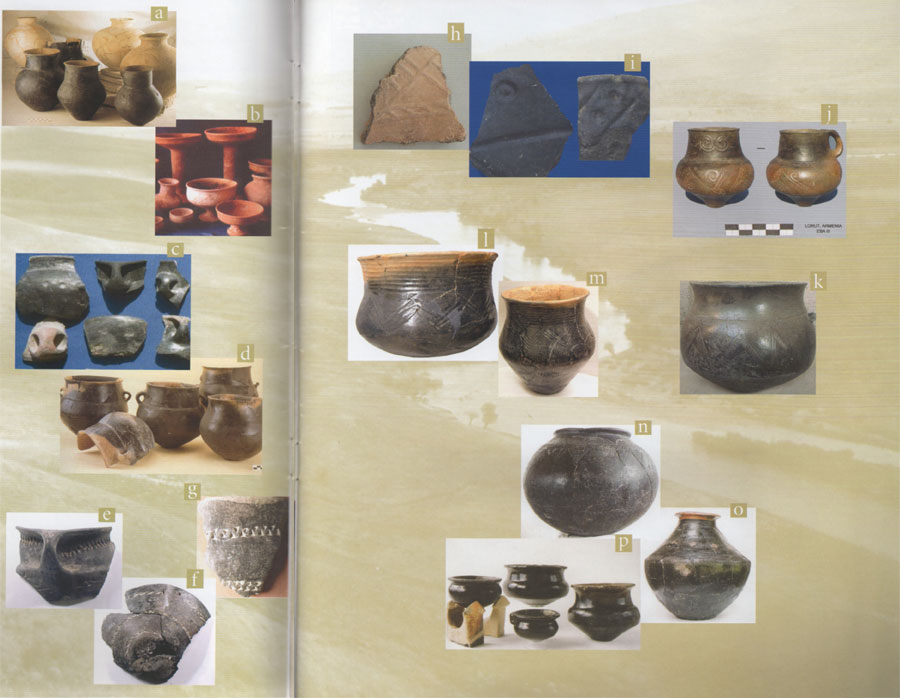
ETC cultures were first identified on the basis of their pottery in the Transcaucasus area between the Kura and Araxes Rivers and between the Caspian and Black Seas. Their very distinctive pottery is handmade and predominantly black on the outside and red or black on the inside. It is highly burnished and often has incised or raised designs of particular shapes. In contrast, the pottery traditionally made in the areas to which ETC pottery spread was wheel-made, buff in color, often painted, and used different shapes for possibly different functions.
Although recent research indicates that the black-red variant may have originated in northeastern Turkey and then spread into the Transcaucasus, over time both ETC pottery types (black-red and black-black) spread south. Early archaeologists interpreted this as evidence for the migration of a monolithic ETC culture, since, at the time, archaeologists saw cultures as collections of distinct artifacts that were thought to represent distinct peoples.
Today our anthropological understanding sees cultures consisting of people organized in definable groups who share belief systems and behavioral patterns which may or may not correspond directly to collections of artifacts. As a result, we must ask what this pattern of spread meant in terms of the cultures involved. Is it evidence of a migration of people? Does it indicate the trade of goods between neighboring cultures? Or does it reflect the assimilation of a foreign pottery style by local people?
